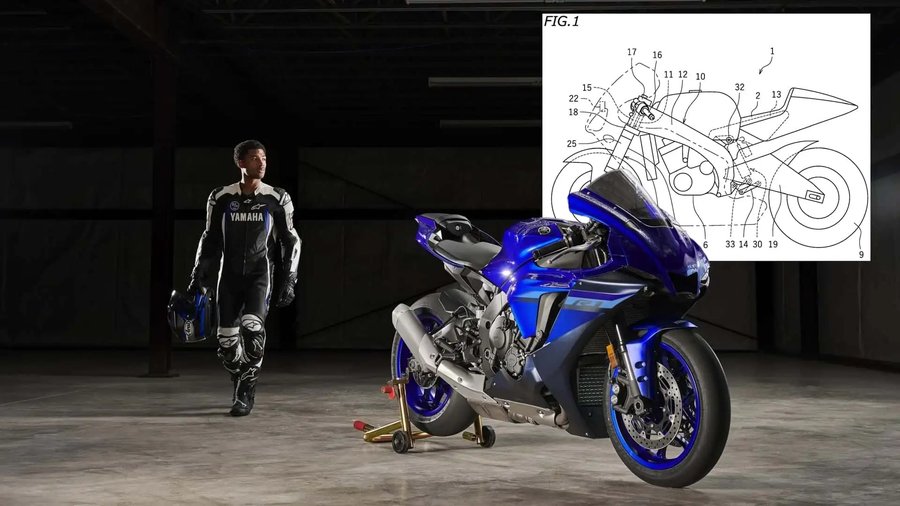Yamaha Patents Anti-Dive Electronic Motorcycle Suspension

Technology rests for no one, and that's especially true for the top-spec sportbikes of the world. You've got bikes with active aerodynamics, launch control, wheelie and drift controls, and all manner of modes to help riders eke out the most performance possible.
But there are still points of contact, and rider inputs, that could be bettered, with one of the biggest being braking and how the motorcycle reacts under braking.
Now, most riders use the front brake far more often than the rear. There's variability, obviously, but the vast majority prefer using the front brake over the rear, as most will say they have finite control over it with their fingers. But, under heavy braking, too much front brake can lead to the motorcycle's suspension to dive toward the pavement, lifting the rear tire, and the rider losing precious traction.
Yamaha might have a solution in its latest patent for active suspension that reduces both dive and squat, the two forces at work when braking or accelerating.
For the uninitiated, dive refers to the front suspension compressing under braking—i.e. when load is applied and the front dives forward—while squat refers to the rear suspension compressing under acceleration—i.e. when the tail of the bike squats toward the pavement. Both are normal and can be reduced by adjusting suspension components like spring rates, the springs themselves, and damper settings.
The problem is that no single setup is perfect to control the two. A softer sprung suspension is better for undulation, bumps, curbing, and putting down power, but then falls apart when you're trying to kill lap times. A stiffer setup is better for laying down laps, but will make the bike twitchy. And both suck while braking and controlling dive and squat.
Enter Yamaha's active suspension.
Now, the patent's language is one couched in comfort, stating, "To perform appropriate braking and suppress reduction in riding comfort when a rider operates a brake for sudden braking in a straddle vehicle [motorcycle] including an electronically controlled suspension, a control device of a motorcycle includes a brake controller and a suspension controller." But if you keep reading the patent's abstract, it quickly becomes about superbikes and sportbikes.
The abstract continues, "When one of a brake lever and a brake pedal is operated, the brake controller executes control for actuating both a front wheel brake and a rear wheel brake; when the brake controller executes the control, the suspension controller performs at least one of increasing a damping force of a front fork in a contraction direction, increasing a spring reaction force of the front fork, increasing a damping force of the rear suspension in an expansion direction, and reducing a spring reaction force of the rear suspension."
That language means that it would kill dive under heavy braking, but would also mean that the controller could kill squat under heavy acceleration, too.
Imagine an R1, MT-09, or even R6 with anti-dive active suspension. You'd essentially have a current generation MotoGP bike for the road.
Nouvelles connexes


